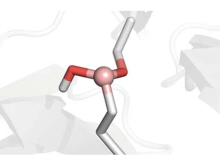Boron-containing compounds play an indispensable role in biological and organic chemistry, functioning as intermediates, catalysts and biological probes. The success of several boron-based medicines further emphasizes the potential of incorporating boron into therapeutic agents. Such agents typically contain a considerable number of heteroatoms, thus the development of technologies that introduce boron into these environments are growing in demand.
- Boroscan: Since the isolation of α-boryl aldehyde in 2011, the Yudin lab has developed a number of boron-based building blocks that have enabled access to compounds of biological significance. Additionally, they have reported a novel technology, Boroscan, which offers rapid access to heteroatom diversity in the vicinity of boron through the use of the boron-based building blocks. The concept of Boroscan refers to a set of molecular technologies that enable rapid production of drug-like molecules equipped with boron.
- Carboxyboronate (CBA): Our inventors have devised a novel method for making a bench-stable and synthetically useful C1 building block– CBA – which represents a long-standing challenge in synthesis. The research team has developed an operationally straightforward, scalable approach to synthesize CBA. The evaluation of CBA’s reactivity profile has also revealed that it can undergo reactions which are analogous to organic carboxylic acids. This surprisingly stable compound is compatible under a variety of conditions, not only providing access into borylated amides and esters, but also enabling the condensation driven construction of various heterocyclic scaffolds. CBA enables the synthesis of previously unattainable heterocycles (e.g. borylated oxazole, oxadiazole and thiazole), which are frequent constituents of drugs and other biologically active molecules. The majority of borylated heterocycles accessible using CBA have never been made before this work.
Thus, this technology offers a way to generate large collections of potent and cell permeable boron-containing molecules, including CBA, which is poised to become a disruptive platform in the field of drug discovery.
OPPORTUNITY
- Bench stable: They have created and isolated a novel, bench-stable borylated building block.
- First one-carbon: This is the first one-carbon containing a MIDA boronate building block.
- Uses commercially available reagents: This building block is accessed from commercially available reagents through an operationally straightforward synthetic transformation.
- Access to novel scaffolds: This reagent permits access to novel borylated scaffolds which are not accessible by established means.
- Alternative synthesis approach: This reagent offers an alternative approach towards the synthesis of a number of pharmaceutically relevant compounds.
- CO Surrogate: This building block has the unique ability to release CO, which can be applied in both biological and organic chemistry.
Marilee Krinsky
Innovations & Entrepreneurship Manager
Innovations & Partnerships Office (IPO)
(416) 978-2514





